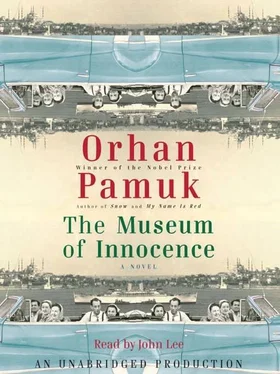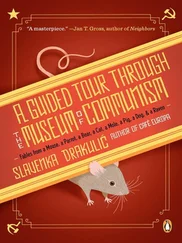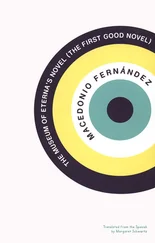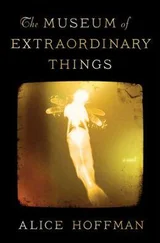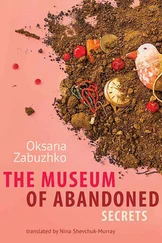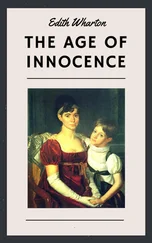As expected, it wasn’t long before Tekyay, the company to which Osman had appointed Kenan manager, became Satsat’s competitor. But its success was not owing to the way Kenan and my brother ran it. Rather it was that the textile mogul Turgay Bey (my spirits plunged whenever I thought of his Mustang, his factory, and his infatuation with Füsun, though for some reason, I no longer felt jealous of him) had signed over the distribution rights of some of his key products to Tekyay. Being a man of fine feelings, Turgay Bey had forgotten all about the snub of the engagement party; he and his family were now on sound terms with Osman and his family. Subscribing to the same travel magazines, they’d go skiing together on Uludağ in the winter, and on shopping trips to Paris and London in the spring.
I was taken aback by Tekyay’s aggressive tactics, though I could do little to counter them. Kenan went after the eager young managers I’d brought into the firm, as well as the two middle-aged ones whose hard work and honesty had been the mainstays of Satsat for many years; lured by the recklessly large salaries he was offering, they defected.
More than once over supper with my mother I complained that Osman was so greedy and keen to seize advantage that he was competing with the firm his own father had founded, but in reply my mother only said, “I really don’t want to come between you two, my son.” I think Osman had encouraged her to believe that my separation from Sibel, my strange new private habits, and my visits to the Keskins’-of which I was certain she was somewhat aware by now-had rendered me incompetent to run my father’s business anyway.
Over the first two and a half years, individual visits to the Keskins’ shed their singularity-the looks I exchanged with Füsun, the meals we shared, our conversations, and our excursions to the Bosphorus, which now extended into winter-without exception, each reenacted an event that had happened before; amassed they evoked a sense of the quotidian (with its own beauty) that was out of time. If we couldn’t get Feridun’s art film into production, the commencement of shooting was forever only months away.
Füsun had resolved, or was acting as if she had resolved, that the art film would take longer than she’d hoped, and that venturing on her own into the commercial film business would leave her vulnerable; however, the anger expressed in her looks was not entirely dissipated. Some nights, if our eyes chanced to meet, instead of looking away like a shy girl, she would bore into me with a fury reminding me of all my faults. I would become despondent at this sudden display of all the anger she had suppressed, but knowing that this made her feel closer to me, I’d rejoice.
By now I’d resumed asking, as the evening drew to a close, “Füsun, how is your painting going?” regardless of whether Feridun was at home or not. (After that evening at the Huzur Restaurant, Feridun was going out less frequently, and having supper with us instead, as the film business was in trouble by now anyway.) I remember once the three of us got up from the table together to consider the painting of a pigeon that Füsun was then working on, and afterward we discussed it at length.
“I really admire how slowly and patiently you work, Füsun,” I whispered.
“I’ve been saying the same thing. She should have an exhibition!” said Feridun, also in low tones. “But she’s too shy…”
“I’m doing these to help pass the time,” said Füsun. “The hardest part is getting the feathers on the pigeon’s head to shine. Do you see?”
“Yes, we see,” I said.
A long silence followed. Feridun had stayed home that night also to watch the sports roundup, I think. When he heard someone scoring a goal, he ran out to the television.
“Füsun, let’s go to Paris one day to visit all the museums, and see all the paintings. I’d like that so much,” I said.
This was bold: a crime punishable by pouts, frowns, indignation, and the silent treatment for many visits, but Füsun took my words very naturally: “I’d like to go, Kemal.”
Like so many children, I’d had a passion for painting during my school years, and for a time, when at middle school and lycée, I had used the Merhamet Apartments to paint “by myself,” even dreaming of becoming a painter one day. It was in those days that I’d first indulged in childish dreams of going to Paris to see all the paintings. From the 1950s until the early 1960s, there was not a single museum in Istanbul in which you could see paintings; there weren’t even any art books or catalogs that one could leaf through for pleasure. So neither Füsun nor I knew much about the art of painting. It was enough for us to enlarge black-and-white photographs of birds and other things and color them in.
As one visit to the Keskins’ followed another, the streets of Istanbul, the world beyond the house, took on an eerie cast. To look at Füsun’s paintings, to witness their slow progress, poring over the photographs of Istanbul ’s birds that Feridun had taken for her, and musing in hushed voices about which she should paint next-the hawk, the dove, or the swallow-this intimation of security, continuity, and the pleasures of home seemed to fix things for all eternity. It lifted up my heart to behold that we lived in a universe both simple and good. The peace I felt came from the place, the room, our mood, and what we saw around us; it came from Füsun’s slow progress painting birds, and the brick red dye in the Uşak carpet on the floor, the pieces of cloth, the buttons, the old newspapers, Tarık Bey’s reading glasses, the ashtrays, and Aunt Nesibe’s knitting-in my mind they were all one piece. I would inhale the room’s fragrance, and later, back in the Merhamet Apartments, the thimble or button or spool I’d pocketed before leaving would help me remember all this, and so prolong my happiness.
After clearing the plates at the end of the meal and putting the big serving platters with the leftover food into the refrigerator (visitors to the museum should pay special attention to the Keskins’ refrigerator, which always struck me as possessing supernatural qualities), Aunt Nesibe would go to fetch her knitting set, which she kept in a capacious old plastic bag, or more typically ask her daughter to fetch it. This was the time when we would retire to the back room. Aunt Nesibe would say, “My daughter, could you bring my knitting when you come back?” Then she would settle in to enjoy knitting and chatting in front of the television. It was because she feared Uncle Tarık, I think, that Aunt Nesibe, who didn’t mind our being alone together in the back room, would not let a suspicious length of time elapse before following us into the room and saying, “Where’s my knitting? The Winds of Autumn is about to begin. Don’t you want to watch it?”
We would watch it. During those eight years I must have watched hundreds of films and television series with Füsun and her family; but I, who can remember even the smallest, most trivial details of anything connected to the Keskin household, can recall not a thing about the films and series we saw, and even less of those discussion programs aired to mark national holidays (with titles like The Conquest of Istanbul: Its Place in World History; Turkishness: What Must It Reflect?; and Coming to a Better Understanding of Atatürk) .
Most of what I recall of the things we watched on television were discrete moments (Aristotle, the theorist of time, would have approved). Such moments would combine with an image and remain engraved in my memory. Half of this indelible memory would be made of the image on the screen or even just a fragment of it. The shoe and the trouser cuffs of an American detective racing up the stairs; an old building’s chimney, which was of no interest to the cameraman, but which had nevertheless slipped into the frame; a woman’s hair, tucked behind her ear, during a kissing scene (while silence reigned at the table); or a timorous girl clinging to her father at a football match, surrounded by thousands of mustached men (probably there was no one at home to look after her); or the socks worn by the closest of the men bent over in prayer at a mosque in Ramadan, on the Night of Measures; or the Bosphorus ferry in the background in a Turkish film; or the tin from which the villain had eaten dolmas; and a good many other things. In my mind these images would combine with a detail of Füsun’s face as she watched that scene: a corner of her mouth, her raised eyebrows, the placement of her hand, the way she left her fork on the side of her plate, or her eyebrows suddenly aloft as she stubbed out her cigarette. Often these images would fix themselves in my mind like the dreams we can never forget. In an effort to make them visible in the Museum of Innocence, I provided artists with detailed instructions, which assumed the form either of questions or of images, but to the questions I never found an exact answer. Why was Füsun so moved by that scene? What was it that had pulled her so far into the story? I would have liked to ask her myself, but when a film ended the Keskins were not inclined to discuss how it had affected them, preferring to discuss the denouement in moral terms.
Читать дальше
